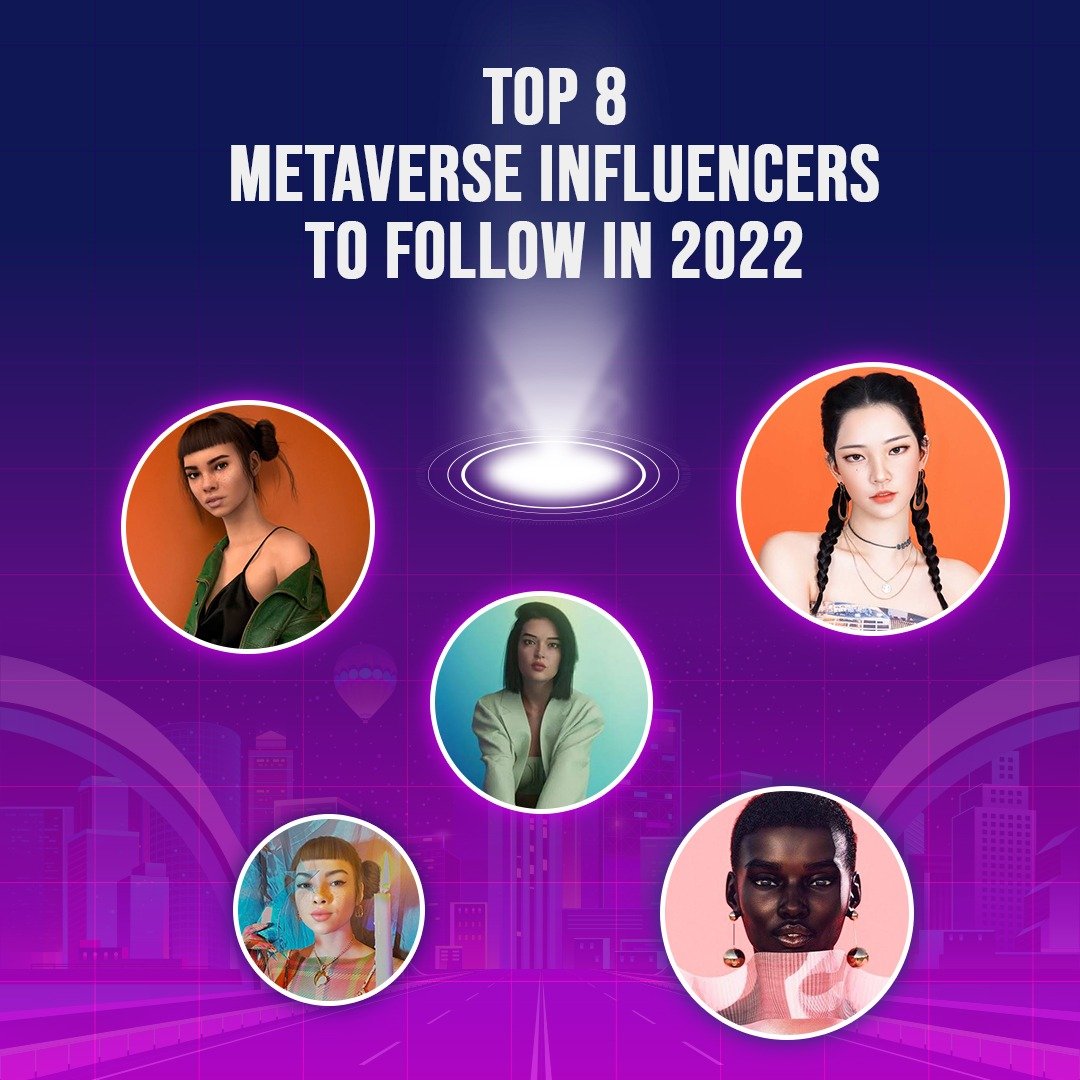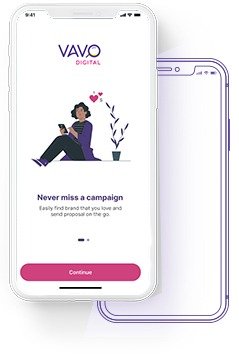
Top 8 Metaverse Influencers You Should Be Following in 2022
What is the Metaverse?
The concept of the metaverse has been around for a while. However, it gained momentum in October 2021 when Facebook rebranded itself as Meta. One of the most significant technological advances ever made will be a precursor to the inevitable creation of a metaverse-connected planet.
The metaverse provides an alternative to actual social interaction by enabling people to communicate with one another in realistic, three-dimensional virtual environments. Platforms like Decentraland let users purchase virtual land and build anything from a house to a metropolis, complete with all the civic infrastructure in the real world. In March, Decentraland hosted the inaugural Metaverse Fashion Week (MVFW), where several well-known fashion and accessory firms, both legacy and digital-first, showcased their newest designs.
It is not surprising that a growing number of renowned global luxury brands, such as Gucci, Prada, Balenciaga, and Burberry, are expanding their presence in the metaverse to ensure they will have a significant presence when the virtual universe is more defined.
The Rise of Virtual Influencers
Despite the evident distinctions between real and virtual influencers, people relate to and connect with both in a similar manner. The majority of people who engage with Kusha Kapila, Bhuvan Bam, or Kendall Jenner have never really met them. Their interaction between a content creator and their audience is limited to what they showcase online as viewers mostly engage with influencers indirectly through the content they post.
To this, some might counter that at least we know they are real individuals. But for years, the majority of users on social media have been communicating with accounts that are not one person.
On Instagram, these accounts are more widely known as “meme accounts,” such as @Pubity and @MyTherapistSays. Even without a proper identity, these accounts have amassed millions of loyal followers.
Virtual influencers can be viewed as the evolution of meme accounts. They are similar to meme accounts but add a face, tone, and POV. The key to success is effective storytelling.
What’s In It For Brands?
A greater number of brands and marketers are experimenting with virtual influencers to find newer innovative ways to engage with their target audience. They can computer-generate avatars with realistic features and traits, who can engage with followers by partaking in the same daily Instagram-worthy activities as real-life influencers.
Here is why partnering with virtual influencers can be beneficial for brands:
- From concept to execution, brands can retain complete control over their messaging and creative processes.
- Brands can create the perfect brand ambassador or face for their brand. With a virtual influencer, there are no concerns about their brand ambassador departing from the script, getting old, or switching to a rival.
The advantages of having a virtual brand spokesperson are highlighted by instances like KFC’s millennialism colonel and Barbie from Mattel.
- Brands compete with one another for consumers’ attention, and one of the main factors influencing relevance is trust. People are trustworthy. Brands can anthropomorphize themselves with the help of a virtual influencer in order to become more relevant and establish stronger connections with consumers.
Top Virtual Influencers You Should Follow
Lil Miquela is the most popular virtual influencer; she made her Instagram debut in April 2016 and currently has millions of followers. Miquela is depicted as a 19-year-old who is half-Brazilian and half-Spanish and is pursuing her musical aspirations in Los Angeles.
The Los Angeles-based start-up Brud created Lil Miquela, who has gained fame by supporting the Black Lives Matter movement, promoting major fashion brands like Prada, virtually appearing at Coachella, and being virtually pictured with stars like Diplo and Millie Bobby Brown, among others.
View this post on Instagram
India’s first virtual influencer is named Kyra and created by TopSocial. She has amassed a decent following of 100K and characterised as a 22-year-old Delhi native who enjoys modelling and travelling.
In a few of the photos on her Instagram, Kyra can be seen taking pictures at beaches and historical sites like the Hawa Mahal in Jaipur. In others, she is pictured savouring delectable meals and doing yoga by the pool.
View this post on Instagram
Shudu considers herself “The World’s First Digital Supermodel” and is constructed to look like one. She was developed by British photographer Cameron-James Wilson and included to the #BalmainArmy of virtual models by Olivier Rousteing, creative director of Balmain.
Shudu, a South African native, made her stage debut in 2017. She rose to prominence after Rihanna’s Fenty Beauty uploaded her photo on their Instagram account, mistaking her for a genuine person testing out a Fenty product.
View this post on Instagram
One of the most well-known Asian metaverse influencers on social media is Rozy Oh. She made her debut in 2020 and was produced by the Korean media business Sidus Studio X.
She is the first virtual influencer in South Korea, and her followers refer to her as “GamSeong JangIn,” which is Korean for “expression specialist,”. This is due to the fact that she adopts a variety of facial expressions and poses for her fans.
Along with modelling for foreign brands like Calvin Klein, she has posed with Korean athletes and celebrities.
View this post on Instagram
- Daisy
The Yoox Net-a-Porter Group, which owns the luxury discount website Yoox, developed Daisy. She is from Milan, Italy, and is depicted as leading a luxurious lifestyle. Modelled after actress Hannah Gross, Daisy has been in a number of advertising campaigns, most notably for Calvin Klein and Tommy Hilfiger.
View this post on Instagram
Maya is Puma’s invention to be their brand ambassador in the Southeast Asia region. She was made in 2020 and identifies herself as a fashion model. She describes herself on Instagram as “Your typical not-so-average Southeast Asian Virtual Girl.” The Puma Rider sneaker was introduced by her.
View this post on Instagram
Developed by Lotte Home Shopping, Lucy is a virtual influencer from South Korea who focuses on promoting the company’s merchandise. The brand’s spokesperson, Lee Bo-hyun, told CNN that Lucy was designed to be more than a pretty face. They wanted Lucy to have a unique backstory as an automotive industrial designer and encourage people to “do what you want to do according to your values.”
View this post on Instagram
Lewis Hiro Newman is the world’s first celebrity virtual human avatar. He is modelled after the famous Japanese actor, creator and entrepreneur Hiro Mizushima. He intends to be involved on a worldwide scale in the fields of music, art, and fashion and has recently launched his fashion line.
View this post on Instagram
Conclusion
It’s impossible to deny the impact of influencer marketing. More brands will adopt their own avatars and take the next steps in developing a deeper, richer community as there is ample data to support the effectiveness of virtual influencers.


